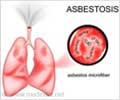A new official clinical policy statement on congenital central hypoventilation syndrome (CCHS) has been released by the American Thoracic Society
A new official clinical policy statement on congenital central hypoventilation syndrome (CCHS) has been released by the American Thoracic Society. This is a disorder of respiratory and autonomic nervous system (ANS) regulation. The ANS regulates reflexive acts, including heart rate and blood pressure, digestion, body temperature and pain perception.
The statement appears in the March 15, 2010 issue of the American Journal of Respiratory and Critical Care Medicine.In light of a crucial discovery linking CCHS to mutations in a single gene, the new guidelines represent a complete overhaul of the guidelines the ATS last published in 1999. In 2003, a gene called PHOX2B was found to be the disease-defining gene for CCHS. The specific manner in which the PHOX2B gene mutates predicts the severity and form of the disease, making it a rich source of diagnostic and prognostic information.
"This discovery confirmed what we had long believed to be true: first, that CCHS is a genetic disorder; second, that the gene responsible for CCHS has a key role in the early embryology of the ANS; third, that inheritance of CCHS and the PHOX2B mutation is autosomal dominant; fourth, that the nature of the PHOX2B mutations can explain the spectrum of the CCHS phenotype; and so much more," explained Debra E. Weese-Mayer, M.D., professor of pediatrics at Northwestern University Feinberg School of Medicine, who chaired the committee that wrote the guidelines. "The discovery that PHOX2B is the gene that defines CCHS offers endless opportunities in terms of basic science inquiry and clinical care— all with the long-term goal to improve quality of life for these patients."
By late 2009, collective publications from laboratories in the United States, France, Italy, Japan, Germany, Taiwan, China, the Netherlands and the United Kingdom have identified nearly 1,000 cases of PHOX2B mutation-confirmed CCHS.
The first sign of CCHS often appears just after birth, when affected infants will turn blue when they sleep, as their breathing becomes very shallow or even stops. Severely affected babies can also turn blue while awake. But now that CCHS is more widely recognized, patients are being identified in the newborn period with greater frequency. Those who were "missed" in early infancy and who have a milder presentation are now being identified in later childhood and even into adulthood. "They usually have a history of turning blue after receiving sedation, anesthesia or anti-seizure meds," explained Dr. Weese-Mayer. "They also may have exceptional talent at underwater swimming or breath-holding (due to an inability to perceive the sensation of asphyxia). Many later-presenting cases will have unexplained neurocognitive delay."
Afflicted individuals generally require fastidious medical supervision to attain the highest quality of life. The opportunity for PHOX2B clinical testing as soon as the diagnosis of CCHS is considered has expedited aggressive intervention and management. Early identification and intervention are critical to maintain optimal oxygenation and ventilation awake and asleep in these highly vulnerable, but extraordinarily "normal" children.
Advertisement
The new guidelines recommend a number of key management options for CCHS:
Advertisement
- Biannual, then annual, comprehensive in-laboratory and in-patient evaluations that would last for several days, and which would include:
- Physiological studies during wakefulness and sleep to assess ventilatory needs during different activities and sleep to ascertain safe conditions and ventilatory management recommendations;
- Endogenous and exogenous gas challenges and autonomic testing to characterize the extent of compromise and to ascertain safe conditions;
- 72-hour Holter monitoring of heart rhythm to identify asystoles, where the heart temporarily stops beating;
- Echocardiograms to screen for effects of low oxygen; and
- Comprehensive neurocognitive testing to measure success of the management and offer intervention options.
- Barium enema or manometry and/or full thickness rectal biopsy for patients with a history of constipation to identify Hirschsprung disease; and
- Imaging for neural crest tumors in individuals at risk based on their PHOX2B mutation.
Because PHOX2B exerts its influence so early in embryonic development, no gene therapy yet exists, though this will undoubtedly be a target of future investigations. Pre-implantation genetics will be another target. Prenatal testing for families with a known PHOX2B mutation is already available.
"Most PHOX2B mutations arise spontaneously, as long as neither parent is affected by CCHS. However, we demonstrated in 2003 that it is also possible for children to inherit the PHOX2B mutation from an unaffected parent. An estimated five to 10 percent of parents of children with CCHS will have mosaicism for the PHOX2B mutation, meaning that they will have the same mutation as their child, but in only a subset of their cells. These parents can pass the mutation on to their offspring with up to a 50-percent risk of transmission in each pregnancy," said Dr. Weese-Mayer.
Currently, the population incidence of PHOX2B mutations across all ethnicities is unknown, but future research will be focused on using the current base of knowledge about CCHS to answer such questions. Dr. Weese-Mayer points to the section of the new ATS statement that deals with "future directions"— outlining the need for prospective studies on large cohorts of children and adults with CCHS to more clearly define the clinical features by specific PHOX2B mutation; the development of animal models to study the mutations and understand their pathology and clinical manifestations; stem cell research to better understand how each organ system can be affected by PHOX2B mutations; and collaboration between clinical physicians, physician-scientists and basic science researchers to better understand and treat the disease.
Source-Eurekalert
RAS













